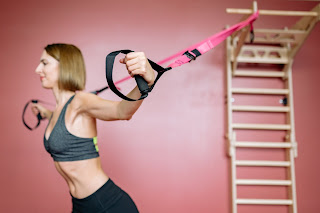CHEST AND SHOULDER GIANT SET
The three chest and shoulder exercises below form a giant set. A giant or cluster set means a combination of three or more exercises done together, back-to-back. Aim for maximum reps of wall walks in the first minute, then move straight to the dive bomber push-ups in the next. Finish with the decline push-ups in the third before taking a one-minute rest and beginning a new round. Try 4-5 rounds. EMOM (every minute on the minute): Minute 1: Wall walks Minute 2: Dive bomber push-ups Minute 3: Decline push-ups Minute 4: Rest Most of the best ways to build muscle without lifting heavier weights require getting the creative juices flowing. You could increase strength, build leaner muscle and improve muscular endurance by performing high reps of these three exercises with little rest. But remember to warm up properly, stretch afterward and give your muscles recovery time between sessions.
1. Wall walks
(Image credit: Getty/urbazon)The full-body exercise develops strong shoulders and core muscles while activating most major muscle groups. Focus on controlling the move without rushing, and aim for at least 6 reps. Avoid dipping your hips in the push-up position. How:
Start in a handstand position facing the wall. Begin by slowly walking your hands forward, away from the wall, and, at the same time, walk your feet down the wall. Keep going until you reach a push-up position. Keep your core engaged, hips aligned with your shoulders and back flat. Pause, then walk your feet back up the wall as you walk both hands toward the wall again.
If you don’t achieve the full range of motion, practice moving as far as you can. As a progression, practice handstand push-ups instead. Starting in the same position, bend your elbows and lower your head to the floor below you, then push back into your handstand position.
(Image credit: Shutterstock)The exercise looks like a downward-facing dog to an upward-facing dog transition used in yoga. It takes an existing amount of upper body strength, so practice first on your knees using the steps below. Only lift your knees when you feel comfortable, and keep your elbows locked close to your body to protect your joints. How:
Start in a downward-facing dog with your fingers pointed forward and your core engaged. Imagine turning your hands slightly outward to roll your elbows inward and look between your feet. Begin bending your elbows and lowering your forearms toward the mat. Drive your body weight forward between your arms and push upward as your hips hover just above the floor into an upward-facing dog, arms straight. Reverse the sequence of movement back to downward dog. You could add a child’s pose or a plank between, or use your knees.
3. Decline push-up
(Image credit: Getty Images)The push-up variation elevates your lower body to emphasize the weight in your upper body, torching the pecs, deltoids and triceps in the process. Keep your elbows tight to your body and lower your chest with control. How:
Place the balls of your feet on a sturdy bench or box — you could also use your sofa if you exercise at home. Start in a push-up position with your core, shoulders and glutes engaged. Your shoulders should stack over your wrists, and your hips align with your shoulders. Bend your elbows and lower until your chest reaches the floor, pause, then explosively push back up to the starting position.
Benefits of bodyweight chest and shoulder exercises Bodyweight upper body exercises strengthen your bones, muscles and joints and improve overall mobility and range of motion. We strongly believe that anyone (who can) should be able to push and pull their weight and focus on strengthening their mind-muscle connection before learning to lift weights. Doing so prepares your body for weightlifting, helping improve posture, functional movement and core stability; this is particularly important when it comes to engaging your chest and shoulders, as many shoulder injuries we’ve seen come from a lack of proper engagement and or shoulder positioning. Each exercise also develops stronger core muscles and boosts flexibility, especially during wall walks and dive bomber push-ups. Yogis could have a slight advantage here, but if you repeat these exercises often enough, you’ll soon reap the rewards.





Comments
Post a Comment